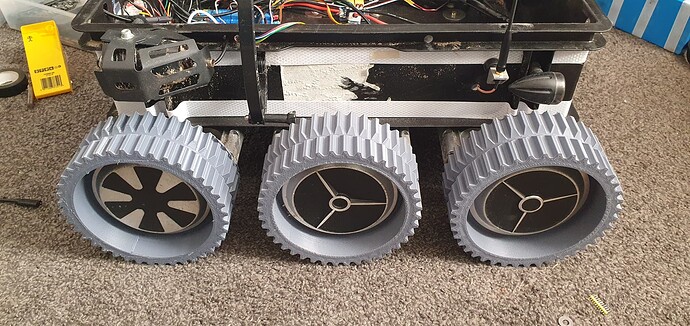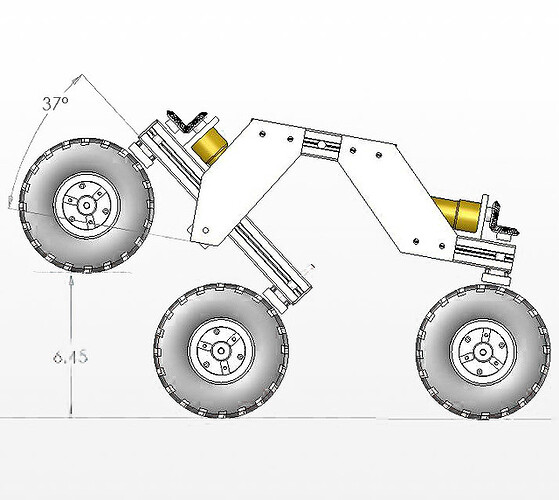Just a bit of status update and breadcrumb. The Beagle Bone Blue functions but isn’t doing anything interesting yet. I’ve pushed Ardupilot work to the side because I was having stability issues with communication between the chair R-net CAN bus and both the Beagle Bone Blue and Raspberry Pi 3B+. The chair is now behaving erratically even when disconnected from any add on controls and I don’t know why. Seating actuators are operated by the wrong buttons. Very strange. I need to get that sorted first, otherwise I won’t know if problems are related to that instability or the Ardupilot CAN driver.
I bought an Omni. Problems with the chair began when I first connected it and remained after I removed it. Omni is a sort of universal way which actual medical professionals add custom controls to wheelchairs. I figured I ought to get familiar with the correct way. Details here WheelchairDriver • View topic - Custom proportional control
I’ve been able to order an R-net programmer finally. It is expected today some time so I can use it to enable OBP (On Board Programming), reset the programming in the used Omni, and test the Omni with my Arduino hack for the first time. That may prove a more reliable way to add Ardupilot to a chair in the long run. Some version of an Omni is available from all or most powerchair manufacturers, so it is a more universal solution that would also work on Pride and Quantum chairs which are popular in the US but do not use R-net.
People likely to need assisted navigation are also likely to have an Omni. It is used to implement latched driving, head arrays, sip and puff systems, which are used when a person has very few highly controllable parts of their body. That makes unassisted navigation tedious. Unfortunately adding an Omni is more expensive if your chair does not already have one.
Omnis only accept joystick style inputs. A forward/reverse speed Y axis and a turn rate X axis. This necessitated my hack to make tank style steering work. The entire wheelchair motor control industry (basically Curtiss-Wright now) is a bit absurd. I’d like to just ditch it all and use standard motor controllers, but many people that need assisted navigation cannot afford to throw out their functioning motor controllers because I don’t like their quirks. So I continue hacking.
Today I found this Permobil Virtual Seating Coach Fleet Management Bluetooth PN 325104 | eBay
It connects to a Permobil Master Module, in the same place as a Permobil Connect Module, and I think the Permobil proprietary internal Wheelchair Builder software connects to that same port via RS-232 when originally programmed at the factory. I could be wrong about that. It contains FCC IC: PVH0946 which is a uBlox bluetooth module with a STM32F103RCT6
That got me wondering if I could just get an STM32 flight controller and connect it to that serial port rather than messing with CAN and R-net at all. I know all the chair’s logs and every firmware on the chair can be updated through that port. However I do not know if it is possible to issue drive commands via that port. Work continues. This part is mostly for educational purposes. It doesn’t serve anyone without a Permobil brand chair.
Lastly, the chair has a new addition, a swarm asset tracker https://swarm.space/product/swarm-asset-tracker/
Every few hours it sends a ping with my GPS coordinates up to a microsatellite. They publish those coordinates and display my location on a map on a password protected website which I can also access with their API or webhooks. I don’t even know what webhooks are, but I’m having a meeting with OCI Oracle Cloud Infrastructure this week to see if we can work something out. The idea is to use the Starlink terminal in the van to pull down my coordinates from the web and display them on an E-ink map in the window of my van. In case I get stuck in the woods, my van back at the trailhead will be showing any potential rescuers the last known location of my chair. I figured that might be useful to others also so it will be developed with an eye toward letting anyone set up an account to do the same. Lots of other features being considered. Let me know if there is any feature you would like to have, or if you would like to work on it. I am not a web or network guy. Embedded stuff only for me. It will be on slomobile.net if we can make it work.




